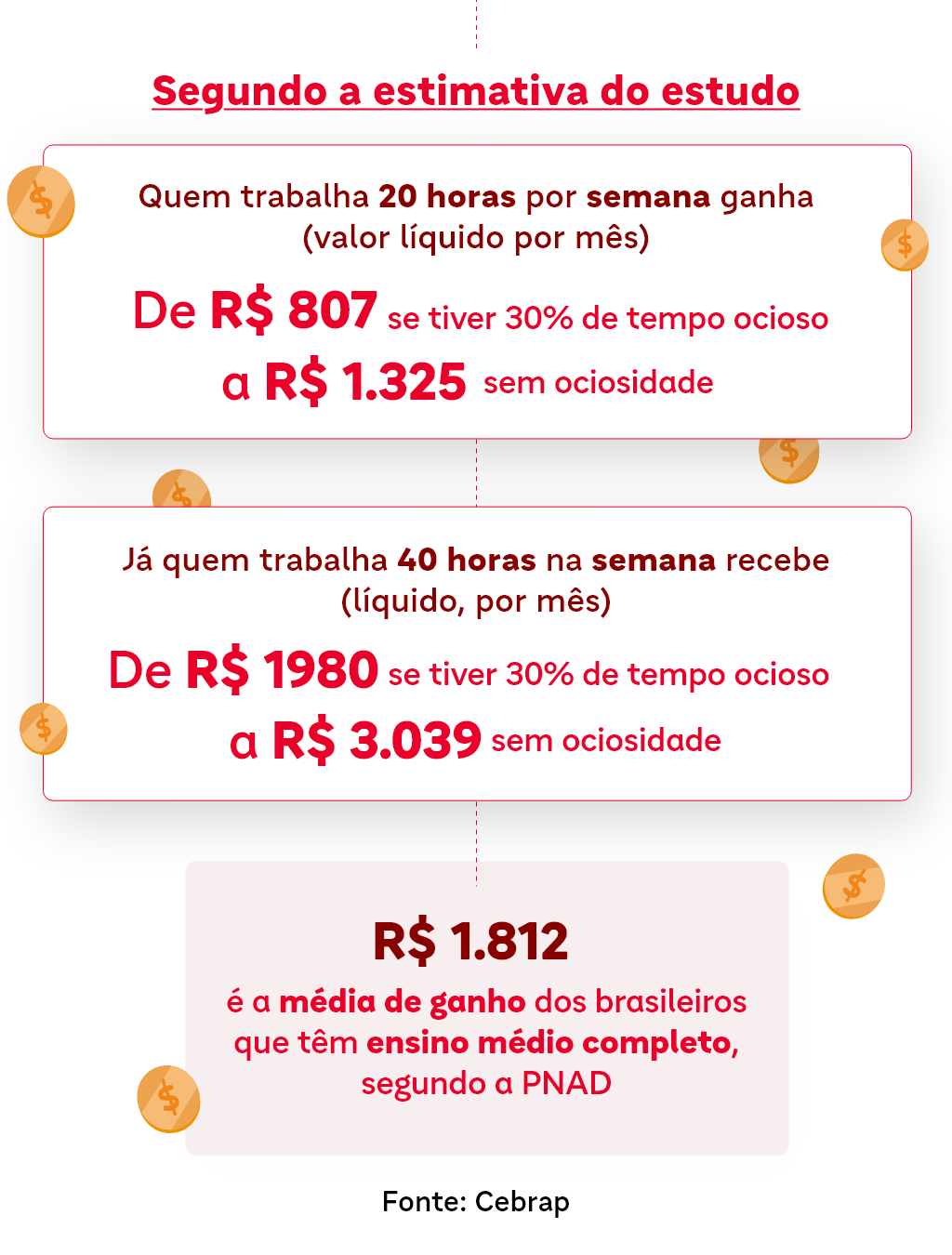When talking about work mediated by platforms, a common question is how much a delivery person earns per hour (or per month).
The answer is not simple, given the nature of the work. The time dedicated to the application varies greatly: the more delivery drivers engage, the more they receive. But the most recent research on the topic sheds light on your remuneration.
In April 2023, Cebrap (Brazilian Center for Analysis and Planning) released the research “Urban mobility and delivery logistics: an overview of the work of drivers and delivery people with apps”, which brings, among other data, the average earnings of delivery people.


This study is based on data provided by members of Amobitec (Brazilian Mobility and Technology Association) —among them, iFood—, as well as their administrative records.
To make this calculation, Cebrap used data on hours actually worked on the platforms, adding, in some cases, the idle scenario — the time that delivery drivers spend logged into the application, but without making deliveries.
This is because, when logging into an application, a delivery person is not 100% available to work on that platform. He can log into other apps, carry out other work and carry out everyday personal tasks.
Therefore, it is important to consider how much the variation in the period not dedicated to deliveries influences income generation, as this directly depends on the time in which they are actually making deliveries.
How much does a delivery person earn per hour and per month
When estimating the gross value received per hour worked, Cebrap arrived at an average of R$ 23. It also made estimates of monthly earnings, discounting the average costs declared by delivery drivers for motorcycle maintenance.
If we take into account the most common average working hours among delivery drivers — 20 hours per week —, their net remuneration varies from R$ 807 (considering 30% of idle time) to R$ 1,325 (without idleness), according to the research.
But, when calculating for 40 hours per week, approaching the working hours defined by the CLT (Consolidation of Labor Laws), the net earnings of delivery drivers vary from R$ 1,980 to R$ 3,039 — with 30% and zero idleness, respectively.
In the two scenarios that consider the journey that most closely resembles that of workers with a formal contract, the monthly income is above the minimum wage, which was R$ 1,212 at the time the research was carried out.
Earnings above those with the same education
For comparison purposes, the average salary for those who have completed secondary education — like 59% for delivery drivers whose only work comes from apps — is R$ 1,812, according to the PNAD (National Household Sample Survey).
“The level of earnings provided by the applications tends to be higher than the average level of earnings for workers with the same education in the Continuous PNAD”, points out the Cebrap research.
The research also shows that 70% of delivery drivers claim to receive between 1 and 3 minimum wages, that is, between R$ 1,212 and R$ 3,636 in 2022.
As the data above refers to the income declared by the interviewees, the study concludes that “the proportion of low-paid workers, both among exclusive workers and among those who use apps as a complementary activity to other jobs, may be associated with very short working hours , in which the interviewee dedicates only a few hours a week”.


